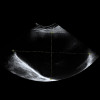
A Case Report of Guillain-Barré Syndrome in Pregnancy
Guillain-Barré Syndrome (GBS) is an autoimmune condition affecting the peripheral nervous system, typified by symmetric, progressive ascending polyneuropathy. It can occur at any point during pregnancy, with a heightened incidence in the postpartum phase, occurring in approximately 1.2 to 1.9 cases per 100,000 individuals. Symptoms typically include pain, numbness, tingling, or weakness in the limbs, which can sometimes be misinterpreted as psychological issues, delaying diagnosis and treatment. During pregnancy, GBS is associated with a greater need for ventilator support and an increased maternal mortality rate up to 7%, with about 20% of affected individuals remaining disabled after one year.
The present report presented a case of a 23-year-old woman at 39 weeks of gestation with symptoms of generalized weakness, back pain, difficulty breathing, and swollen feet, four days before delivery. She had no signs of preeclampsia or other concerning symptoms. After examination, she was diagnosed in the latent phase of labor, suspected to have scar dehiscence due to persistent tachycardia. She underwent an emergency cesarean section, delivering a healthy baby. Postoperatively, she experienced ongoing tachycardia and, by the second postoperative day, had developed significant weakness in both lower and upper limbs, prompting a neurology consultation.
Further testing showed acute inflammatory demyelinating polyradiculoneuropathy (AIDP) in spite of normal MRI results and inconclusive nerve conduction investigations. Treatment with plasma exchange was initiated due to worsening symptoms, leading to gradual improvement. By discharge, her strength had significantly increased, and she achieved complete recovery by the six-month follow-up.
AIDP, a form of GBS, is rare in pregnancy and can pose a diagnostic challenge due to its nonspecific initial symptoms, which can mimic common pregnancy complaints. Although GBS can happen at any point during pregnancy, it is most common in the third trimester and the first two weeks postpartum. The diagnosis is typically clinical, supported by cerebrospinal fluid analysis and electromyography, although early-stage tests may not always produce conclusive results.
In this case, the initial presentation of palpitations and back pain, together with the lack of previous infections, resulted in a misattribution of symptoms. Prolonged tachycardia was observed, most likely as a result of GBS-related autonomic dysfunction. Awareness of such atypical presentations is crucial for timely diagnosis and treatment.
Standard treatments for GBS include intravenous immunoglobulin (IVIG) and plasma exchange. Plasma exchange, which has been demonstrated to greatly speed up recovery times, was well received by the patient in this case. The patient recovered completely and avoided respiratory issues with appropriate care.
GBS during pregnancy and postpartum is uncommon, and healthcare providers must recognize this rare condition to facilitate prompt diagnosis and treatment, as its initial symptoms often resemble typical pregnancy issues.
Source:Thimmappa SS, Suma KB. Limping legs and racing heart of immediate postpartum – a rare case report. The New Indian Journal of OBGYN. 2024; 10(2): 450 - 52. DOI -10.21276/obgyn.2024.10.2.39








Please login to comment on this article